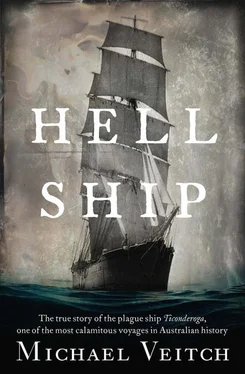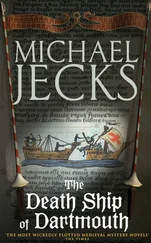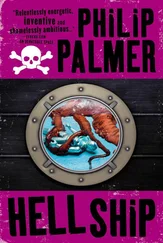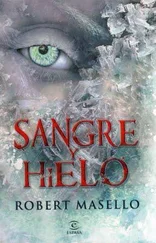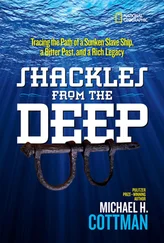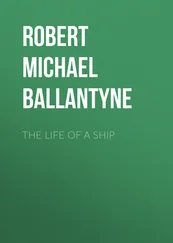In April 1891, Donald McDonald visited the cemetery at the Point Nepean Quarantine Station for the first time since having been there with his family nearly 40 years earlier. Although still sited just back from the pretty foreshore of the cove, now named Ticonderoga Bay, he noted that the graves were in disrepair, many with indecipherable names, others just little mounds with no identifying marks at all. He sat for a long time, until the sun began to set, reflecting on those times and all that had happened in his life subsequently.
In 1917, he wrote of the experience in the venerable Melbourne newspaper The Argus . He recounted that, walking among the few headstones, he noted the sandstone blocks were even back then covered in moss and beginning to crumble back to sand. ‘Half obliterated as the inscriptions were, the words “from the ship Ticonderoga ” were readable on many’, he wrote. Lingering until the autumn darkness fell, McDonald says that he became disoriented on his way back, and at one point had to strike a match to find the path leading him away. In the light of the match, amid the thick tea-tree scrub, a single headstone was briefly illuminated and the name became clearly visible. ‘Margaret McDonald,’ it read—it was the grave of his own mother, who he had buried at this very spot all those decades ago.
When, a few years later, McDonald again visited the little graveyard, his mother’s headstone was gone. Looking back at the incident and on the Ticonderoga herself, McDonald reflected:
In such a swelter of humanity, typhus was king, and his sceptre a busy scythe… but with all its suffering and death, there was some soul of goodness in the things evil of those good old ghastly times.
I am enormously grateful to my cousin, Pat Hocking, who in stellar fashion has performed the role of unofficial Veitch family historian for many years, and whose impressive archive of letters and documents pertaining to James William Henry Veitch she made available to me. I have never learned so much about my family in such a short time.
Thank you to my brother Simon for sourcing and restoring some of the images used, particularly tracking down the original portrait of our ancestors James and Annie Veitch. Thanks also to my sister Kate for her encouragement and editorial support.
Likewise, thanks to the small but dedicated team at the Point Nepean Historical Society in Sorrento, just a stone’s throw from the old quarantine station itself. Thank you especially to Janet South, who prepared several large folders of wonderful information regarding the Ticonderoga , her passenger list, and an extensive history of the station, where a great deal of the drama of the story took place.
Thanks particularly to Mary Kruithof, whose pioneering interest and research in her 2002 book Fever Beach brought the story of the Ticonderoga to public light for the first time in 150 years.
And finally, and most importantly, profound thanks to my wonderful partner, Brook, who from the very beginning has been, and continues to be, an indispensable source of support and encouragement.
Only one book has ever previously been written telling the story of the Ticonderoga , namely Fever Beach by Mary Kruithof, a fellow Ticonderoga descendant. Mary’s ancestors were the Fanning family who travelled to Melbourne from Londonderry, Ireland, and she tells me she wrote the book as a purely private venture after being encouraged by friends and family to commemorate the 150th anniversary, in 2002, of the Ticonderoga ’s arrival. Although privately published, Mary has had to write a second edition, and frequently orders more and more copies as the popularity of Fever Beach continues to outstrip her initial expectations, and deservedly so. It is a wonderful book, brilliantly researched, and provided my main secondary source in writing my own account of the Ticonderoga .
A significant speech delivered in November 1992 at the old Point Nepean quarantine station by historian Florence Chuk was the first many people learned of the Ticonderoga story, and, along with her notes which she so generously lent to me, also provided me with many quotes and pieces of information. Her book The Somerset Years gave me a good deal of background on some of the Ticonderoga ’s passengers, who would otherwise just have been names on a list.
A handful of other works mention Ticonderoga ’s voyage, including Doctors at Sea by Robin Haines and Rob Mundle’s Under Full Sail . Doctors at Sea provided me with a most detailed picture of the role of surgeons at sea in the nineteenth century, their importance to the passengers, and the problems they faced. Rob Mundle, a sailor himself, gives an excellent background to the clipper era and its importance in Under Full Sail, also bringing to life such characters as the great Bully Forbes, as well as brilliantly explaining the advent of the vital Great Circle route.
Author Don Charlwood had a life-long passion for the story of the emigrants under sail, and his book The Long Farewell is a superb collection of first-hand accounts of those who made the journey from Britain.
A history of life within Britain’s emigration depots, particularly at Birkenhead, is captured with wonderful colour by Keith Pescod in his work Good Food, Bright Fires & Civility .
Unfortunately, the diary or detailed first-hand account by a Ticonderoga passenger is yet to be found, but many anecdotes and letters exist. Only in later life did passengers like Christopher McRae, James Dundas and Donald McDonald first pen their thoughts, and then only in a handful of feature stories for various newspapers. McDonald’s brief account of the voyage and of revisiting his mother’s grave at the quarantine station only appeared in The Argus in 1917. The story of the young McRae’s remarkable 60-mile trek from the quarantine station to the door of his relative in Coburg came to light in a Saturday afternoon edition of The Argus on 4 August 1934, in an article written by his distant relative, John Andrew McIvor. In this he also quotes another unnamed Ticonderoga survivor as having told him, in 1909, that, ‘Whole families were wiped out: in some cases both parents died, leaving young children. Of 15 families from St Kilda—that ultima thule of the Scottish Isles flung out towards Iceland—only 15 individuals survived’.
As I detail in the book, my own forays into the bowels of the Public Record Office in London yielded such gems as the original correspondence of Lieutenant-Governor La Trobe to the Ticonderoga disaster and its aftermath, including the decision to deny my great-great-grandfather’s request for increased remuneration due to the extra duties he undertook after the Ticonderoga ’s principal surgeon, Sanger, became ill.
I am particularly gratified to know that in 1952, on the centenary of the landing of the ‘Hell Ship’, the Point Nepean site where my ancestors first stepped foot onto Australian soil was officially renamed ‘Ticonderoga Bay’.
Adams, P. 2013, Fatal Necessity: British Intervention in New Zealand, 1830–1847 , Wellington: Bridget Williams Books.
British Parliamentary Paper Relative to the Australian Colonies No 15. 1/4/1853.
Carroll, B. 1970, ‘Fever Ship’, Parade , August 1970, p. 25.
Charlwood, D. 1981, The Long Farewell: Settlers Under Sail , London: Allen Lane.
Chuck, F., 1987, The Somerset Years: Government-Assisted Emigrants from Somerset and Bristol Who Arrived in Port Phillip/Victoria, 1839–1854 , Ballarat, VIC: Pennard Hill Publications.
Читать дальше
